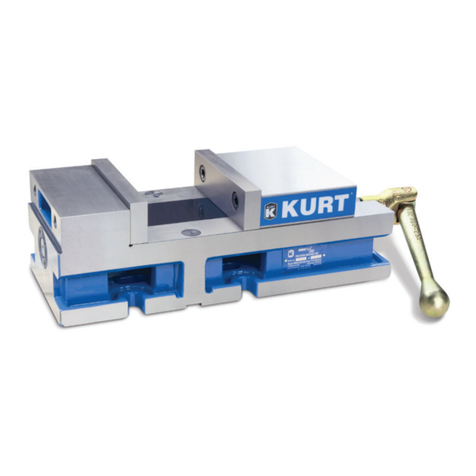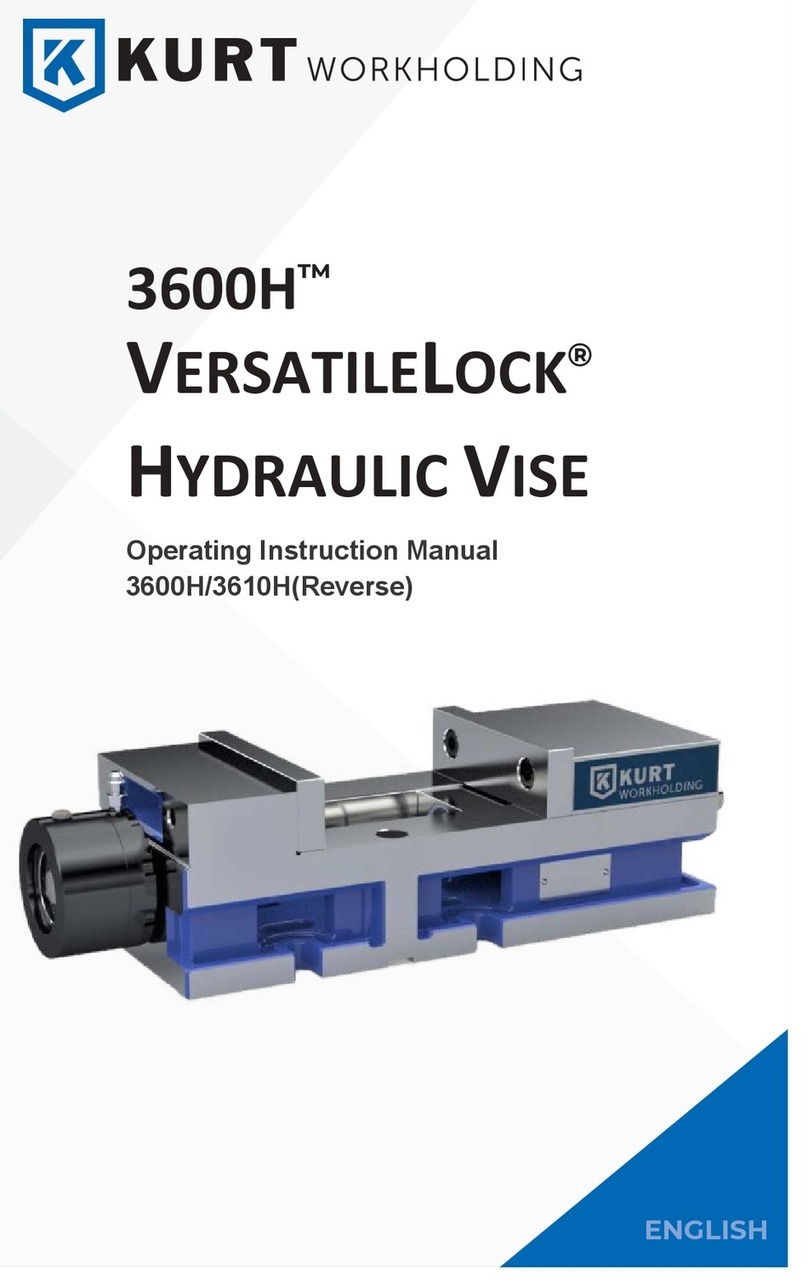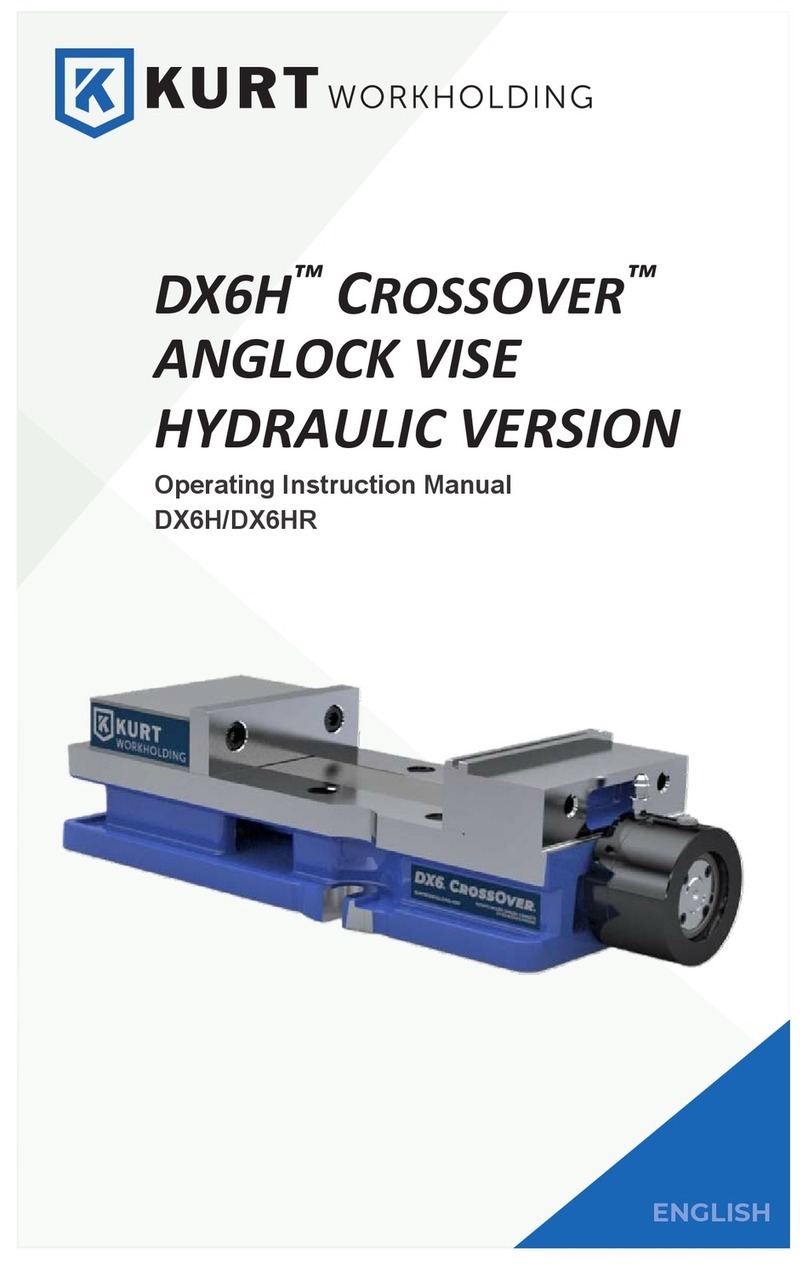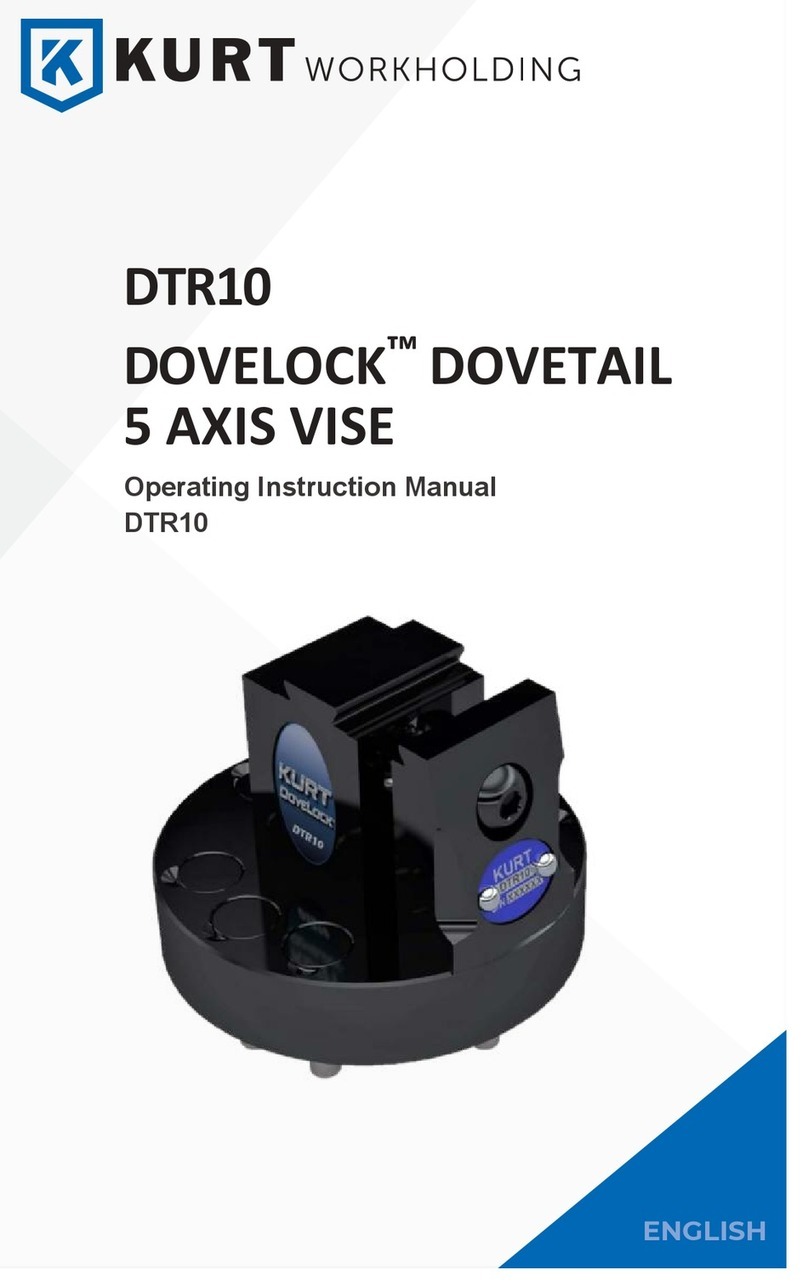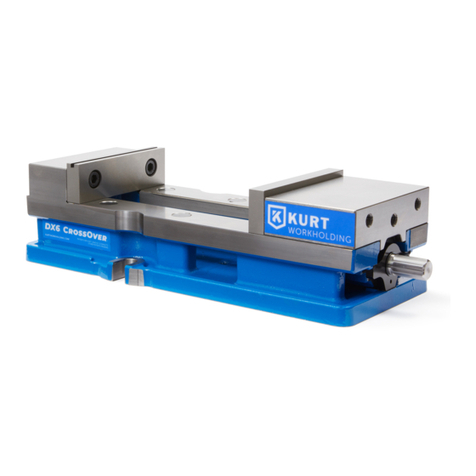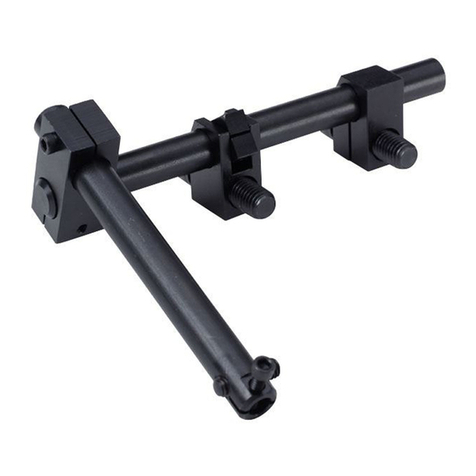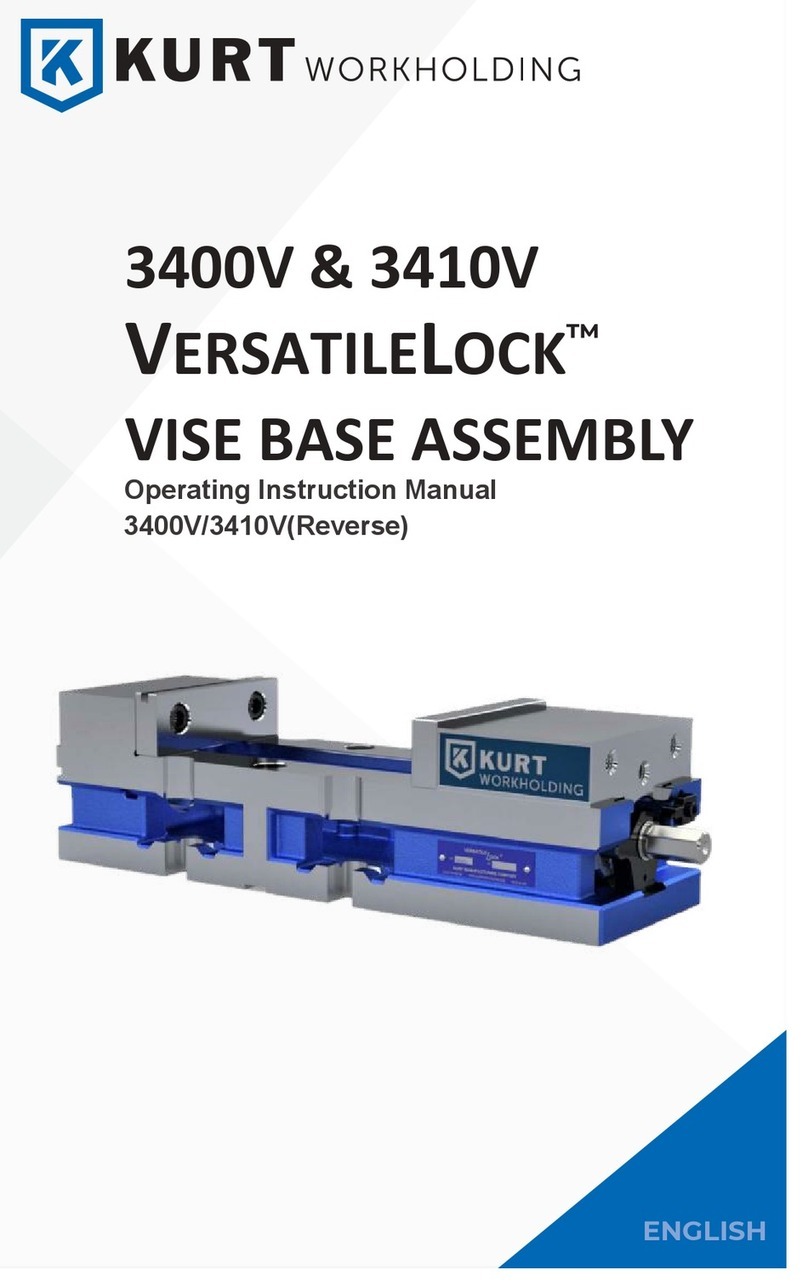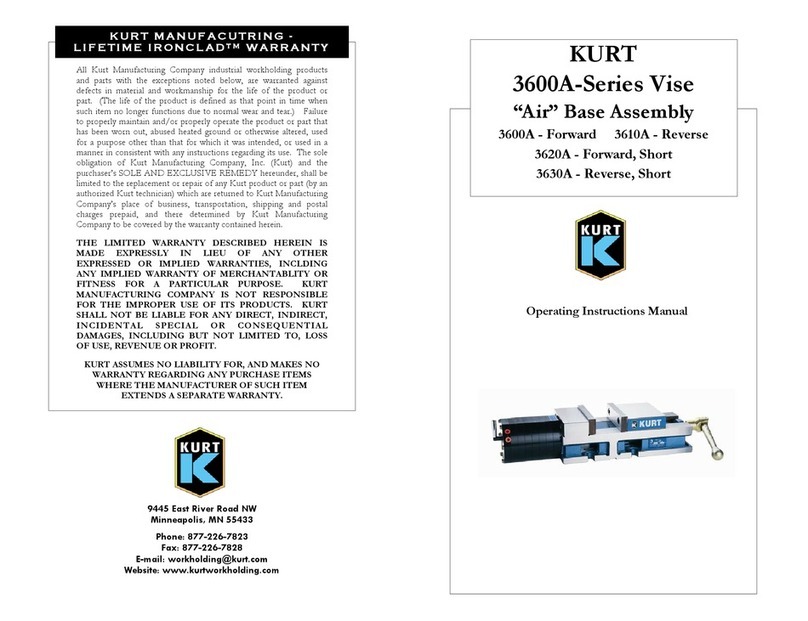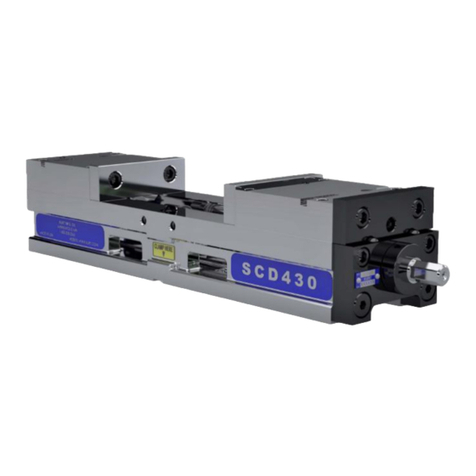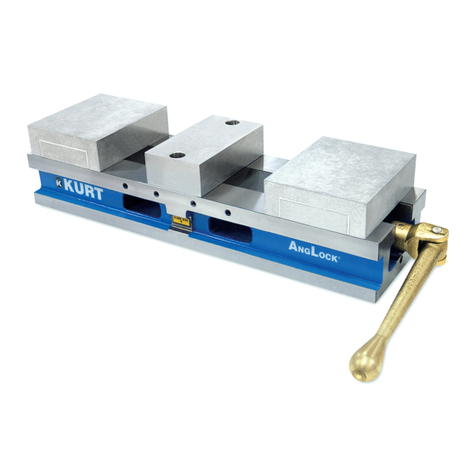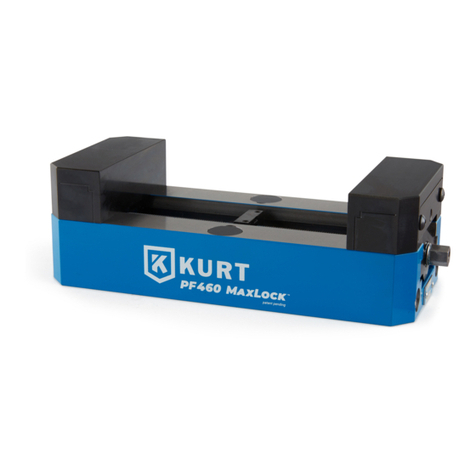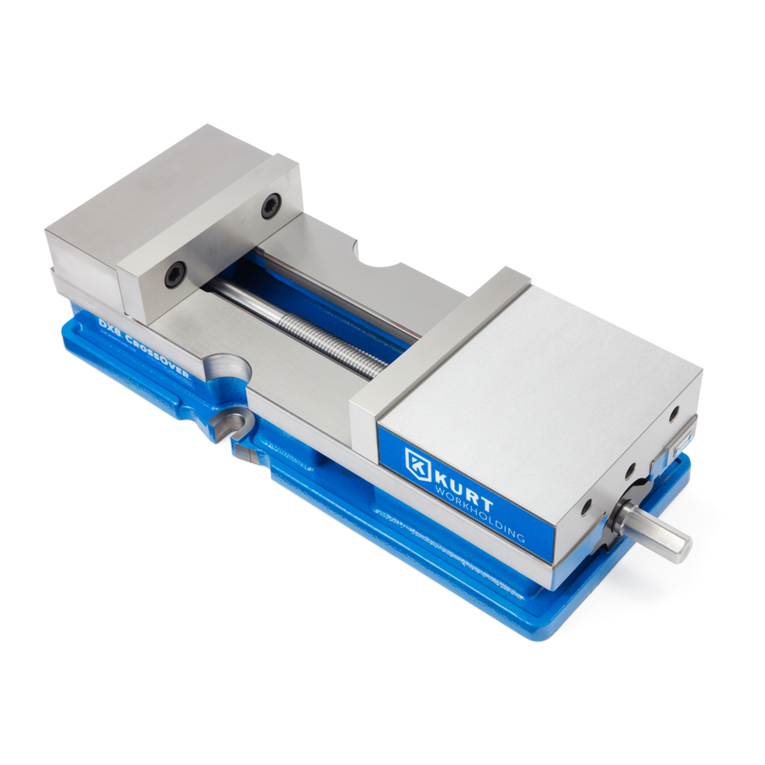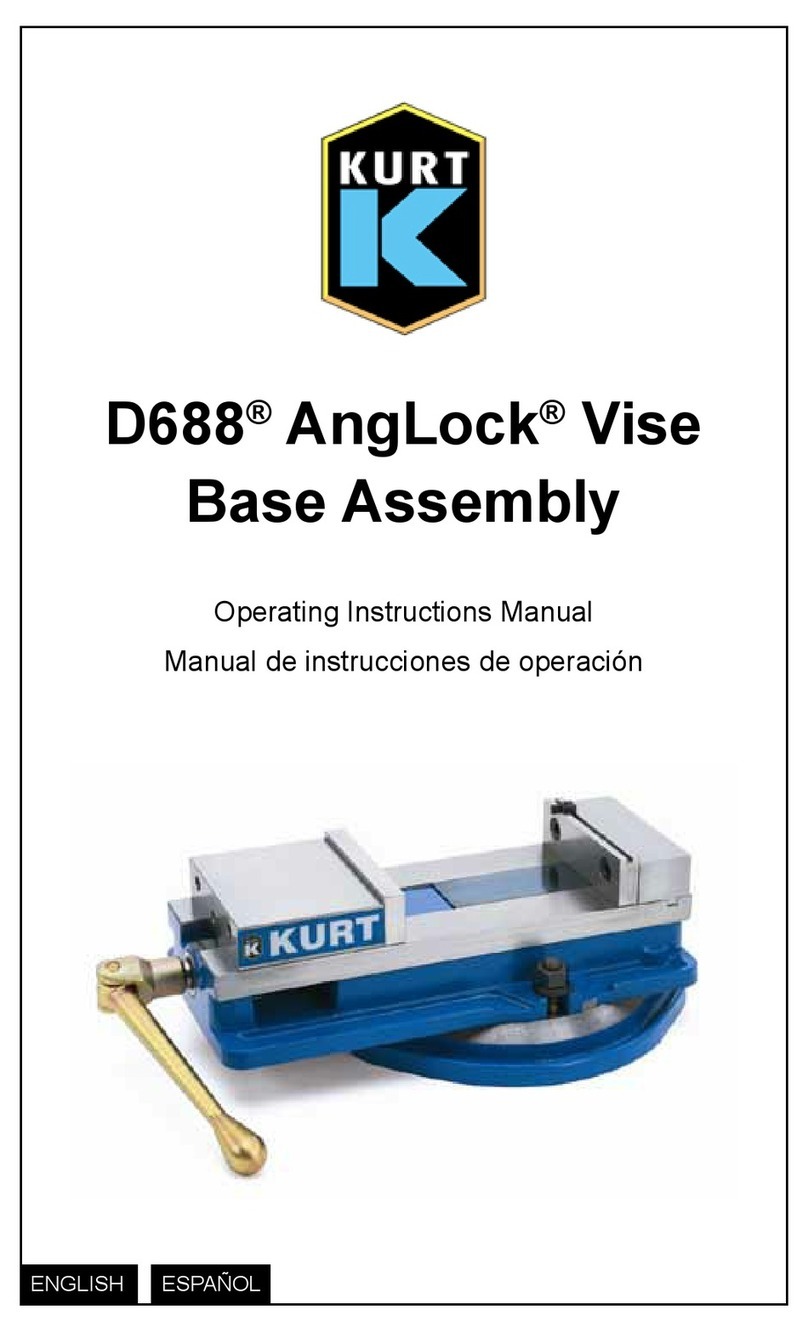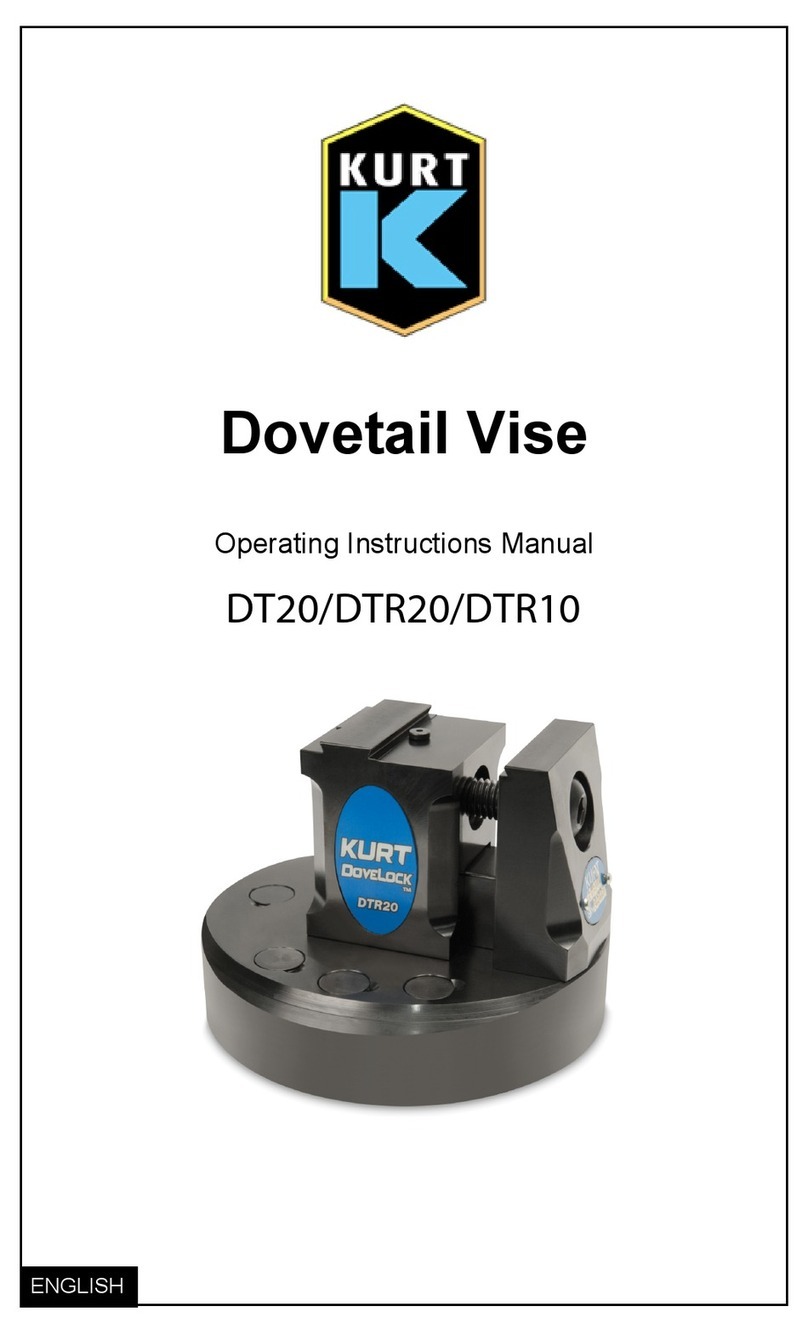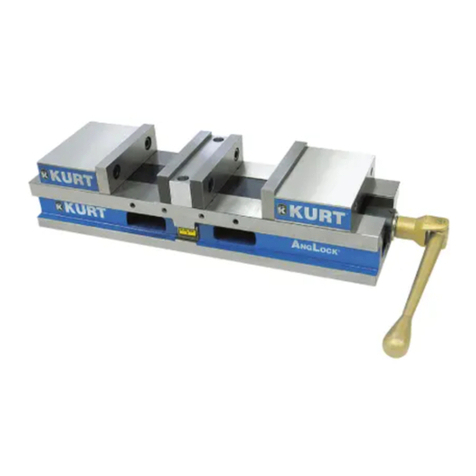
5.
Place the threaded collar (#23) on top and compress the springs
while threading the collar into the holding block. The threaded
collar has two holes for the spanner wrench and two half moon slots ¾
of the way down the side making an intermittent thread. Looking
through the tapped hole where the set screw was (#25), continue to
screw the collar into the holding block until you can see one of the
slots appear. Watching the slots through the threaded hole, continue to
thread the collar into the holding block ½ turn at a time until the last
thread on the collar before the slot is past the set screw hole. You
should only be able to see the slot in the collar.
6.
Place set screw (#25) in the threaded hole of the collar and tighten.
Then back off the set screw and tighten until it is snug.
Over tightening of this set screw will deform the collar and cause your
vise screw to bind during use.
Reassembling the nut and screw assembly
1.
Stand the screw on the hex end. Apply a thin coat of oil in the slot that
holds the springs (#11) and the pin (#12) and down the length of the
screw to the shoulder on the hex end
2.
Place the holding block on the threaded end of the screw with the
threaded collar side facing towards the hex end of the screw. Slide the
holding block all the way down to the shoulder of the screw.
3.
Slide a new o-ring (#15) onto the smooth end of the clutch
4.
Place a new spiral retaining ring (#16) onto the smooth end of the
clutch after the o-ring
5.
Place clutch (#13) on the screw, smooth end first, with the two
notches on the inside of the clutch facing downward opposite the
drive slot. Slide the clutch down the screw, stopping just before the
slot. Do not cover the slot with the clutch.
